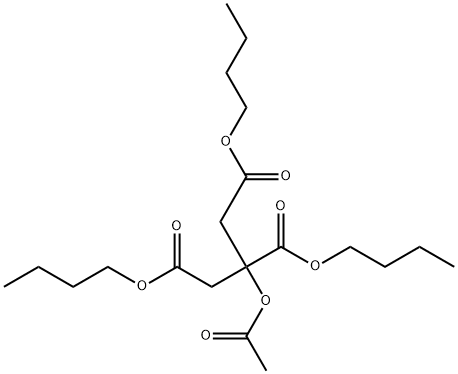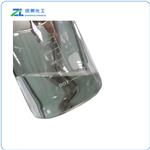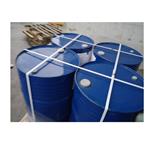Chemical Properties
clear colorless liquid
Chemical Properties
Acetyltributyl citrate is a clear, odorless, practically colorless, oily
liquid.
Chemical Properties
Acetyl tributyl citrate (ATBC) is a colorless, odorless liquid. Its water solubility is less than 0.002 g/100 mL, but it is soluble in organic solvents.
Chemical Properties
Tributyl acetylcitrate has a very faint, sweet, herbaceous odor. At high levels (e.g., 1000 ppm emulsion in water), it has
a mild, fruity, nondescript flavor.
Uses
plasticizer flavoring agent
Uses
These Secondary Standards are qualified as Certified Reference Materials. These are suitable for use in several analytical applications including but not limited to pharma release testing, pharma method development for qualitative and quantitative analyses, food and beverage quality control testing, and other calibration requirements.
Uses
Labelled Tributyl O-Acetylcitrate (T772950). Topical pharmaceutical formulation anesthetic surfactant ester.
Definition
Aqueous-based pharmaceutical coat-
ings.
Production Methods
Acetyltributyl citrate is prepared by the esterification of citric acid
with butanol followed by acylation with acetic anhydride.
Preparation
From citric acid via the tributyl ester followed by acetylation.
Taste threshold values
An emulsion of the title material in water at 1000 ppm has only a very faint, mildly fruity-winey, berry-like odor and a mild, nondescript taste.
General Description
Tributyl 2-acetylcitrate is a hydrophobic biodegradable plasticizer, that is usually synthesized by esterification of citric acid. Pharmaceutically, it is used as an excipient, which is generally applied as a thin film over the tablets or capsules.
Pharmaceutical secondary standards for application in quality control, provide pharma laboratories and manufacturers with a convenient and cost-effective alternative to the preparation of in-house working standards.
Pharmaceutical Applications
Acetyltributyl citrate is used to plasticize polymers in formulated
pharmaceutical coatings, including capsules, tablets, beads, and
granules for taste masking, immediate release, sustained-release
and enteric formulations.
Safety Profile
When heated to decomposition it emits acrid smoke and irritating fumes.
ADD750
Safety
and films intended for direct food contact. It is also used in selfadhesive
thin films used for topical delivery systems. It is generally
regarded as a relatively nontoxic and nonirritating material.
However, ingestion of large quantities may be harmful.
LD
50 (cat, oral): >50 mL/kg
LD
50 (mouse, IP): >4 g/kg
LD
50 (rat, oral): >31.5 g/kg
Carcinogenicity
The chronic toxicity of ATBC
was evaluated in rats fed diets containing 200, 2000, or
20,000 ppm of ATBC for 2 years. There were no treatment-
related lesions in any organs examined.
Solubility in organics
Miscible with alcohol and oils.
storage
Acetyltributyl citrate should be stored in a well-closed container in a
cool, dry location at temperatures not exceeding 38℃. When stored
in accordance with these conditions, acetyltributyl citrate is a stable
product.
Incompatibilities
Acetyltributyl citrate is incompatible with strong alkalis and
oxidizing materials.
Regulatory Status
Included in FDA Inactive Ingredients Database (oral capsules and
tablets). Included in nonparenteral medicines licensed in the UK.
Approved in the USA for direct food contact in food films.



